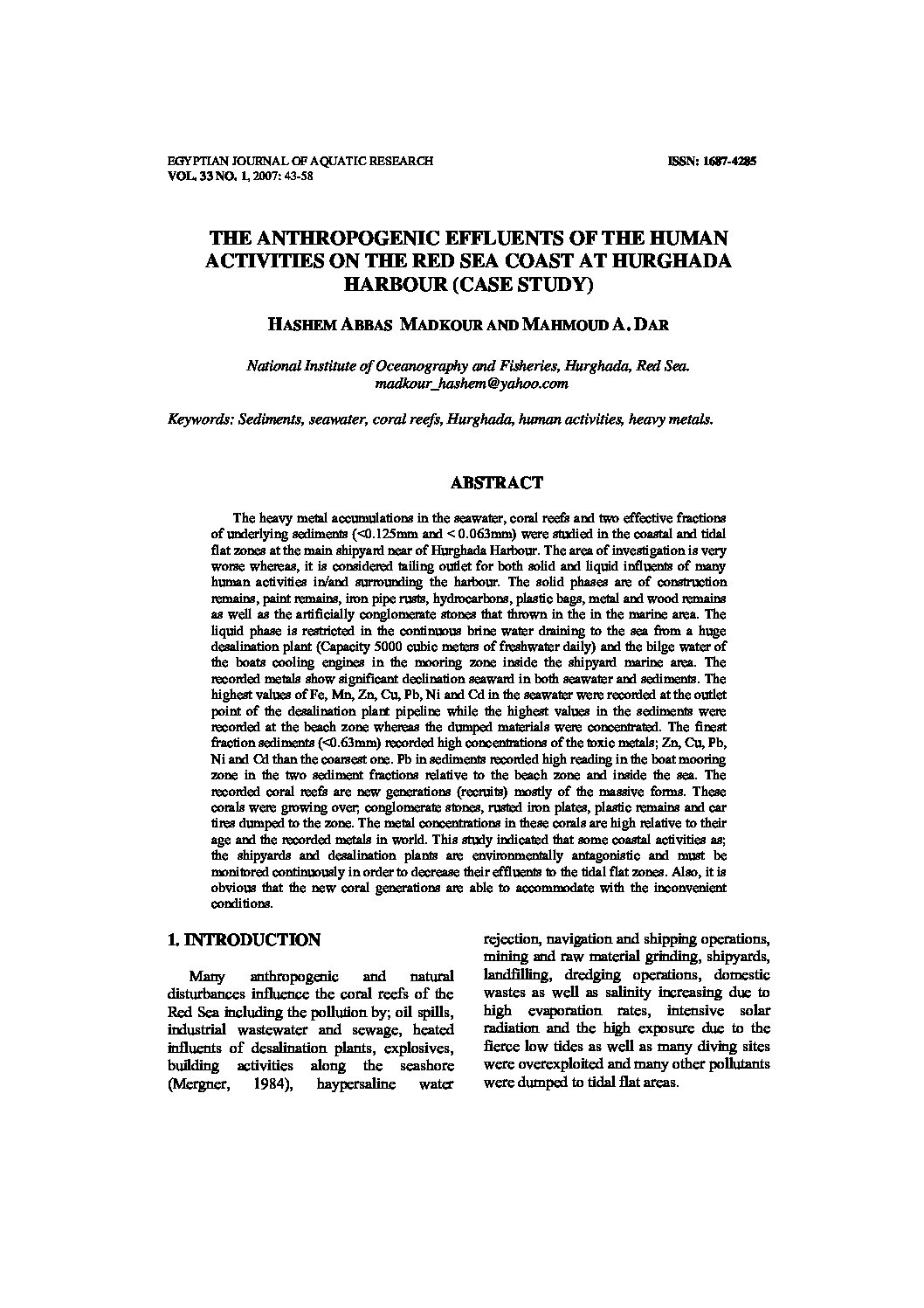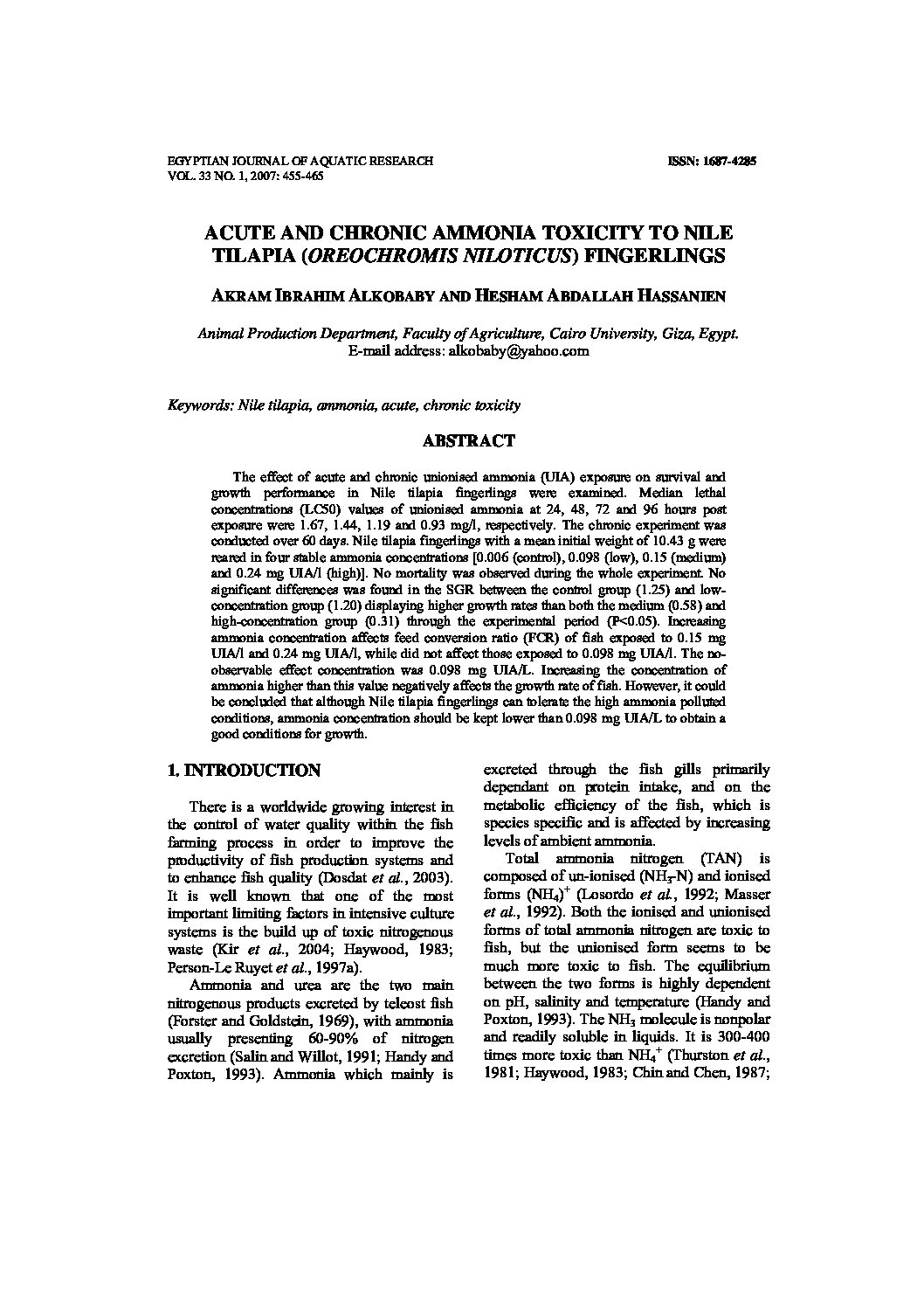Categories
vol-33THE ANTHROPOGENIC EFFLUENTS OF THE HUMAN
ACTIVITIES ON THE RED SEA COAST AT HURGHADA
HARBOUR (CASE STUDY)
HASHEM ABBAS MADKOUR AND MAHMOUD A. DAR
National Institute of Oceanography and Fisheries, Hurghada, Red Sea.
[email protected]
Keywords: Sediments, seawater, coral reefs, Hurghada, human activities, heavy metals.
ABSTRACT
The heavy metal accumulations in the seawater, coral reefs and two effective fractions
of underlying sediments (<0.125mm and < 0.063mm) were studied in the coastal and tidal
flat zones at the main shipyard near of Hurghada Harbour. The area of investigation is very
worse whereas, it is considered tailing outlet for both solid and liquid influents of many
human activities in/and surrounding the harbour. The solid phases are of construction
remains, paint remains, iron pipe rusts, hydrocarbons, plastic bags, metal and wood remains
as well as the artificially conglomerate stones that thrown in the in the marine area. The
liquid phase is restricted in the continuous brine water draining to the sea from a huge
desalination plant (Capacity 5000 cubic meters of freshwater daily) and the bilge water of
the boats cooling engines in the mooring zone inside the shipyard marine area. The
recorded metals show significant declination seaward in both seawater and sediments. The
highest values of Fe, Mn, Zn, Cu, Pb, Ni and Cd in the seawater were recorded at the outlet
point of the desalination plant pipeline while the highest values in the sediments were
recorded at the beach zone whereas the dumped materials were concentrated. The finest
fraction sediments (<0.63mm) recorded high concentrations of the toxic metals; Zn, Cu, Pb,
Ni and Cd than the coarsest one. Pb in sediments recorded high reading in the boat mooring
zone in the two sediment fractions relative to the beach zone and inside the sea. The
recorded coral reefs are new generations (recruits) mostly of the massive forms. These
corals were growing over; conglomerate stones, rusted iron plates, plastic remains and car
tires dumped to the zone. The metal concentrations in these corals are high relative to their
age and the recorded metals in world. This study indicated that some coastal activities as;
the shipyards and desalination plants are environmentally antagonistic and must be
monitored continuously in order to decrease their effluents to the tidal flat zones. Also, it is
obvious that the new coral generations are able to accommodate with the inconvenient
conditions.







